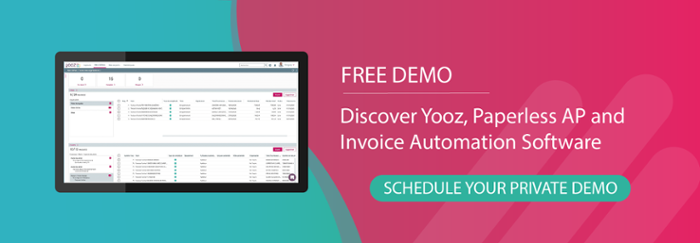As companies are increasingly implementing Accounts Payable automation, it's clear that this technology offers substantial benefits. In the quest for efficiency and cost-effectiveness, Procure-to-Pay solutions have become indispensable tools for businesses operating in the UK. But how exactly do they work and what benefits and opportunities do they offer to businesses?
What are Procure-to-Pay solutions?
Procure-to-pay solutions, often abbreviated as P2P, represent an integrated suite of software applications designed to streamline and automate the procurement process from requisition to payment. These solutions encompass a wide range of functionalities, including purchasing, invoicing, vendor management and payment processing.
At their core, procure-to-pay solutions aim to centralise and standardise procurement activities, enabling organisations to achieve greater efficiency, control and visibility throughout the procurement cycle.
Key components of Procure-to-Pay solutions
P2P solutions comprise several interconnected components, each playing a vital role in automating and optimising the procurement process. Understanding these key components is essential for harnessing the full potential of a P2P solution. Some of the essential elements that constitute a P2P solution include:
- Requisition management: This component allows users to create, submit and approve purchase requisitions electronically. It streamlines the process of requesting goods and services within a company, ensuring proper authorisation and budget adherence.
- Supplier catalogue management: Supplier catalogues serve as repositories of pre-approved goods and services available for purchase. Procure-to-pay solutions enable companies to maintain and manage supplier catalogues efficiently, providing users with access to a curated selection of products and services.
- Purchase order (PO) management: PO management automates the creation, approval and transmission of purchase orders to suppliers. It facilitates seamless communication between organisations and their suppliers, ensuring accurate order placement and timely delivery of goods and services.

- Invoice processing and management:
Procure-to-pay solutions streamline the invoice processing workflow, from receipt and validation to approval and payment. Automated invoice matching against purchase orders and receipts helps mitigate errors and discrepancies, improving accuracy and efficiency.
- Payment processing: Payment processing functionalities enable organisations to execute payments to suppliers electronically. Procure-to-pay solutions support various payment methods, enhancing speed and security in the payment process.
- Reporting and analytics: Comprehensive reporting and analytics capabilities provide companies with insights into procurement performance, spending trends and supplier relationships. Procure-to-pay solutions generate real-time dashboards and customisable reports, empowering stakeholders to make data-driven decisions and optimise procurement strategies.
Benefits of implementing automated P2P processes
Implementing an automated P2P process offers a multitude of benefits for organisations seeking to enhance efficiency, control and visibility across their procurement operations. Let's explore the compelling advantages that come with adopting P2P automation:
Streamlined procurement workflow
P2P automation streamlines the entire procurement lifecycle, from requisition to payment, eliminating manual tasks and inefficiencies. By automating repetitive processes such as purchase requisitions, approvals and invoice processing, companies can accelerate procurement cycles and reduce processing times.
Improved cost management
An automated P2P process enables companies to gain better control over their spending by enforcing compliance with purchasing policies and negotiated contracts. Through centralised procurement data and analytics, businesses can identify cost-saving opportunities, negotiate better terms with suppliers and optimise their overall procurement strategies.
Enhanced visibility and transparency
P2P automation solutions provide stakeholders with real-time visibility into procurement activities, expenditure and supplier performance. By consolidating procurement data into a single platform, organisations can track spending trends, monitor transaction statuses and ensure compliance with regulatory requirements, fostering greater transparency and accountability.

Reduced errors and discrepancies
Automated P2P processes minimise the risk of errors and discrepancies associated with manual data entry and processing. By implementing automated validation checks and invoice matching algorithms, companies can mitigate the likelihood of payment errors, duplicate invoices and non-compliant spending, enhancing accuracy and reliability in financial transactions.
Enhanced supplier relationships
A P2P automation solution facilitates seamless communication and collaboration between buyers and suppliers, fostering stronger supplier relationships and partnerships. By paying suppliers on time and making less errors, companies keep building a good brand image and trust with their business partners.
Compliance and risk management
P2P automation solutions help organisations mitigate compliance risks and ensure adherence to regulatory requirements, industry standards and internal policies, notably through enforcing approval workflows, audit trails and segregation of duties
Scalability and adaptability
P2P processes are scalable and adaptable to accommodate changing business needs, growth opportunities and evolving market dynamics. Whether expanding into new markets, adding new suppliers, or integrating with existing enterprise systems, organisations can leverage P2P automation solutions to scale their procurement operations seamlessly and efficiently.
Implementing Procure-to-Pay solutions effectively
Setting up a P2P automation solution requires careful planning, collaboration and strategic execution. It's not just about adopting new technology but also about transforming processes and driving organisational change. Let's explore some of the key considerations for implementing P2P automation effectively.
Assessing your current process
Before embarking on the implementation journey, it's essential to conduct a thorough assessment of your current procurement process. Evaluate existing workflows, pain points and inefficiencies to identify areas needing improvement. Consider factors such as manual intervention, paper-based documentation, decentralised purchasing and lack of visibility into spending patterns. By gaining a clear understanding of your current process, you can pinpoint specific areas where P2P automation could have the most significant impact and tailor your implementation strategy accordingly.
Developing a comprehensive implementation plan
Begin by outlining clear objectives, timelines and milestones for the implementation project. Define roles and responsibilities, establish communication channels and allocate resources effectively to ensure a structured and coordinated approach.
Customisation vs. Out-of-the-box solutions: finding the right balance
Evaluate the need for customisation based on organisational requirements, industry-specific regulations, and unique business processes. Strike a balance between customisation and standardisation to minimise complexity and maximise system usability and scalability.
Ensuring seamless integration with existing systems
Integrating a P2P automation solution with existing business systems is crucial for maximising efficiency and ensuring data accuracy across the organisation. Seamless integration enables automatic data flow between P2P systems and other critical business applications, such as an ERP, any other accounting software and inventory management systems.
Before initiating the integration process, it's essential to conduct a comprehensive analysis of integration requirements, identifying data fields, transaction types and business processes needing integration.

Choose the most suitable integration methods and protocols based on your company's technical infrastructure and requirements, considering scalability, flexibility and security. Implement robust data governance and security measures to protect sensitive information during the integration process, defining access controls, encryption protocols and authentication mechanisms.
Develop comprehensive testing and validation procedures to verify the accuracy of data exchanged, collaborating closely with IT teams, business users and solution providers. Offer extensive user training and support to ensure employees understand how to navigate integrated systems effectively, providing user-friendly documentation, tutorials and training sessions.
Implement monitoring and maintenance strategies, setting up monitoring tools, alerts and performance dashboards to track data flows and address integration-related incidents promptly.
Monitoring and measuring key performance indicators
Define key performance indicators (KPIs) aligned with strategic objectives and business outcomes. Establish benchmarks, track progress, and analyse performance data to identify areas for improvement and drive continuous optimisation.
Overcoming common implementation pitfalls and risks
Anticipate and mitigate common implementation challenges, such as scope creep (gradual expansion of project requirements beyond their originally defined boundaries), resource constraints and technology dependencies. Proactively identify risks, develop counteractive strategies and maintain open communication channels to address issues as they arise.

Training and change management for successful adoption
Invest in comprehensive training programmes to equip users with the knowledge and skills needed to navigate P2P automation solutions effectively. Provide ongoing support, guidance and feedback to facilitate user adoption and address resistance to change.
Addressing security and compliance concerns
Implement robust security measures and access controls to protect sensitive data and mitigate cybersecurity risks. Ensure compliance with data privacy regulations, industry standards and internal policies to safeguard organisational assets and maintain trust with stakeholders.
Continuous improvement and adaptation strategies
Foster a culture of innovation and continuous improvement within the organisation. Solicit feedback from users, analyse user experiences, and iterate on processes and functionalities to address evolving needs and capitalise on emerging opportunities
Making a strategic move towards efficiency and innovation with Yooz
Yooz revolutionises P2P Accounts Payable automation through the integration of AI, Deep Learning, and RPA, achieving an impressive 80% invoice automation rate effortlessly. Its seamless integration of real-time AI with user-friendly features ensures swift deployment within just an hour, requiring minimal training. Yooz offers a comprehensive solution, streamlining the entire P2P workflow from purchase requests to payments on a unified platform.
With a substantial client base and extensive document processing expertise, Yooz exemplifies effectiveness. It seamlessly integrates with native connectors across numerous countries, supported by a team of experts catering to diverse needs. Prioritising innovation, Yooz dedicates a significant portion of its revenue to annual R&D efforts, leading to significant advancements in the industry. As a result, Yooz stands as a beacon of efficiency in P2P automation.
Are you ready to streamline your accounts payable processes with Yooz?








